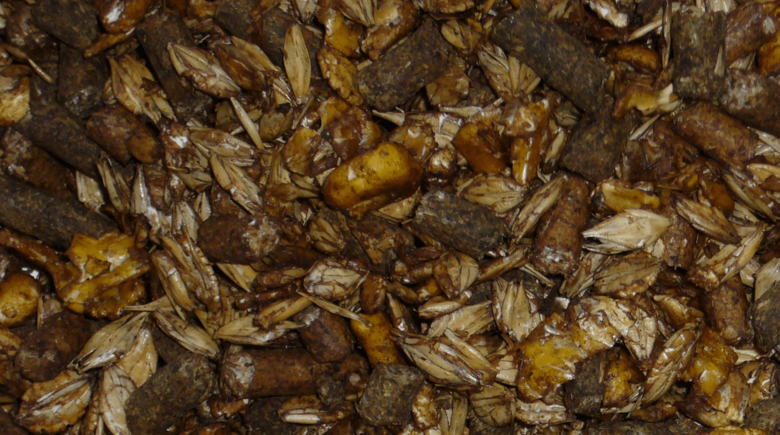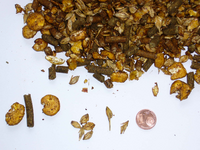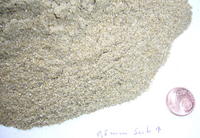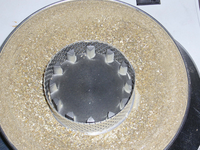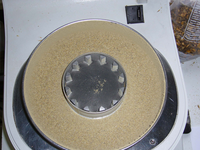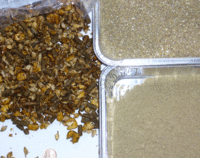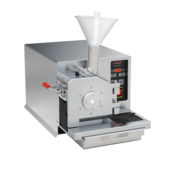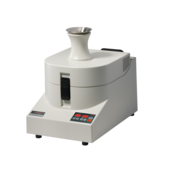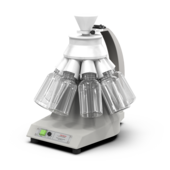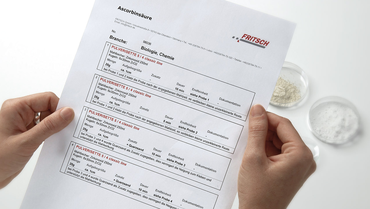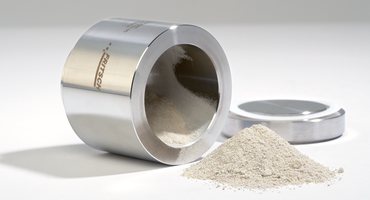Volver a vista general
Analytical determination of crude fibre in animal feed
For quality assurance purposes those substances of contents are constantly examined. If you look at the concrete task, you will see that muesli for horses has to be analysed. Especially critical and subject to errors can be the content of crude fibres. With an ultra-modern instrument by Gerhardt this analysis is performed. Modern analysers are characterized by the reduced use of chemicals and optimized timing. Approximately 1 g of the sample weight of the substance to be analysed shall be added to the analyser. The batch size is such that at least one mixed sample of 1 kg of muesli must be comminuted.
Inhomogeneous sample
Looking at the individual components, the pellet sorted out in the picture weighs 0.7 g, the yellow chunk only 0.3 g and the husk almost nothing. However, raw fibres are concentrated in the husk in particular.
This means that a faulty analysis is inevitable if the sample is insufficiently comminuted. The analytical error is not attributable to the analytical instrument, but to the inhomogeneous sample.
An increase in the initial sample weight is offset by the consumption of chemicals such as acid and lye and the time required for the cooking processes. It is therefore important to prepare a homogeneous sample using a suitable laboratory mill.
Comminution with the PULVERISETTE 14
For the one-step-comminution with only one instrument, various tests were conducted with the Variable Speed Rotor Mill PULVERISETTE 14 classic line. It became clear, that as the finest sieve, the 0.5 mm sieve may be utilized, but the obtained fineness is not sufficient. Here clearly elongated remainders of the husks can be discerned. The solution is therefore a two-step comminution.
For the pre-crushing of larger quantities of muesli we recommend a Cutting Mill. Considering the good cleaning possibilities for contamination-free preparation, this should be the Universal Cutting Mill PULVERISETTE 19 with variable speed 300-3000 rpm. Considering the good cleaning possibilities for contamination-free preparation, is this the For the 2nd stage and thus the fine comminution of a smaller mixed sample, Variable Speed Rotor Mill PULVERISETTE 14 classic line should be used. If a limited budget only permits the investment in a mill, the larger sample quantity can also be pre-comminuted in batches with the PULVERISETTE 14 classic line and a 2 mm sieve.
The following experiments were conducted
A larger quantity of the sample was first pre-shredded in several batches with the PULVERISETTE 14 classic line using a 2 mm sieve and then a partial quantity was again finely crushed with the PULVERISETTE 14 classic line, but this time with a sieve with a mesh size of 0.2 mm. Pictured on the right: A glance into the opened collecting pan of the mill, after the sample is put through the 2 mm sieve. Visually the result is still clearly inhomogeneous. For the creation of a smaller mixed sample, for the second step of the comminution, by all means a sufficient mixing and exact sample division is to be kept in mind. For the division of the sample we recommend the Rotary Cone Sample Divider LABORETTE 27.
Further Comminution
Product recommendation
Provided, that the Universal Cutting Mill PULVERISETTE 19 is available, or larger numbers of samples are constantly processed, it is by all means recommended, that the larger amount is pre-comminuted with the Cutting Mill; and after sample division, the obtained smaller amount is finely comminuted with the Variable-Speed Rotor Mill PULVERISETTE 14 classic line.
-
Download the FRITSCH-report as PDF file
-
Detailed grinding reports
Volver a vista general

